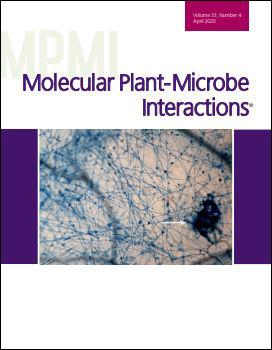
Credit: Irene Serrano
Sometimes scientists begin research and find exactly what they expected. Other times they discover something unexpected. Such was the case for a group of scientists studying plant stress responses who stumbled upon a new mutation.
“The discovery of this mutation was actually a surprise,” said first author Matt Neubauer. “And by trying to better understand this new mutation, and what effect it had on plant stress responses, we uncovered new information about how different plant stress regulators function.”
These scientists were working on a stress-regulating gene known as ENHANCED DISEASE RESISTANCE1 (EDR1) when they identified a new gain-of-function mutation in a second gene named PHYTOALEXIN DEFICIENT4 (PAD4), a gene that regulates plant responses to biotic stress.
“PAD4 has been studied for a long time, but this is the first time a gain-of-function mutation has been identified,” said Neubauer. “We named this mutation pad4-13. It occurred as a spontaneous mutation in the edr1-mutant background and enhances cell death during fungal infection. We believe it was selected during backcrossing of the original edr1 mutant because it enhances the visible edr1 mutant phenotype, powdery mildew-induced cell death.”
They also found that this mutation makes the PAD4 protein more active, which in turn enables plants to have a stronger resistance response to pathogen infection. This is unique, as all previously discovered pad4 mutations are loss-of-function and make plants more susceptible to bacterial, oomycete, and fungal pathogens.
The scientists also discovered one more significant detail about plant stress regulators. It has been established that PAD4 interacts with a partner protein known as EDS1 (for ENHANCED DISEASE SUSCEPTIBILITY) to turn on plant stress responses. Through this research, scientists found that EDR1 blocks PAD4 from interacting with EDS1, which could provide a way to turn off or dampen stress responses.
“The discovery that EDR1 may directly regulate PAD4 enhances our knowledge of how plants control stress responses,” said Neubauer, while acknowledging that there is still more to learn. “Ultimately we were unable to show how this new mutation makes PAD4 more active.”
###
For more information, read “Arabidopsis EDR1 Protein Kinase Regulates the Association of EDS1 and PAD4 to Inhibit Cell Death” published in MPMI.
Media Contact
Ashley Bergman Carlin
[email protected]
Related Journal Article
http://dx.




